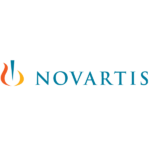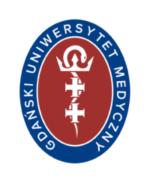Innovations: an important supplement to address antimicrobial resistance
Multi-sectoral interventions, cross border strategies and innovations required to fight antimicrobial resistance and should go hand in hand

Article by Dr. Gudrun Mernitz, BioCon Valley, board member ScanBalt® fmba
![]()
Antimicrobial resistance (AMR) and hospital-acquired infections (HAI) are a global threat.
The World Economic Forum’s Global Risks 2014 report included AMR among the top societal global risks. HAI have a substantial impact on morbidity, mortality and health costs. Approximately 4.1 Mio patients acquire a healthcare associated infection in the EU each year.
Deaths occurring are estimated to be at least 37,000 and contributing to an additional 110,000 annual deaths. Up to 400,000 deaths in Europe in 2050 are foreseen.
As recently discussed at the Northern Dimension of Public Health and Social Well-Being (NDPHS) event “From strategies to action – Addressing the challenges of AMR in the Northern Dimension area” (19 November 2015, Berlin) not only multi-sectoral interventions are necessary but also cross border strategies to establish standards, procedures, and methods for HAI surveillance, prevention and control.
Baltic Sea Region: High potentials in development of infection prevention and diagnostic tools.
Innovation can be one of the elements in fighting AMR and be a supplement to the crucial basic measures.
New innovative products and services can assist the public and private healthcare providers, which will be able to better track and stop the spread of drug-resistant infections in their facilities, thereby protecting patients and saving lives provided the innovations are applied for practical use.
Since professionals working in the clinics are often burdened by increasing hospital routines innovations are also needed to ease their job.
Those innovations comprise the development of new antibiotics and effective vaccines but also new diagnostic tools, surveillance instruments and hygiene procedures.
Innovations to fight AMR is an interesting market for the Baltic Sea Region med-tech industry but is not an alternative to e.g. better hygiene standards at hospitals.
However, neither should innovation be excluded as a relevant supplement with significant potential in the fight against AMR.
Diagnostics essential to reduce use of antimicrobials
One of the major causes of AMR is the wrong use of antimicrobials.
At present, it is difficult for physicians to quickly and accurately identify the microorganism responsible for infection and to treat it accordingly. As a result, antimicrobials that are ineffective at treating the infection are often prescribed, which contributes to the evolution of resistant strains.
Therefore, the development of cost-effective, accurate, rapid, and easy-to-use Point of Care (POC) diagnostics, which aid correct diagnosis and treatment of infection, is essential. But a major obstacle for bringing new diagnostic tools and services faster and more effective to the market is insufficient collaboration between hospital clinics and companies.
Here we have an opportunity to use collaboration in the Baltic Sea Region as a heaver.
The importance of Innovative materials
Another area especially important in finding new approaches include infections that can be related to medical technical products.
These can for example be urinary infections in patients with catheters or implant related infections, operating incision infections and contamination in health care premises.
Here we need innovative materials such as materials less susceptible to biofilm formation or antimicrobial furniture just to mention two fields of particular interest.
Data availability and interoperability
A third – and huge – issue is the data availability, interoperability and the necessity of developing uniform surveillance methods.
Because resistant bacteria are unlikely to stay isolated, stewardship efforts must be improved globally and international attention is needed to improve surveillance of emerging pathogens and resistance patterns.
The use of electronic health records by hospitals should facilitate real-time clinical decision support related to antibiotic prescribing.
In the cross border context, it is necessary to develop and evaluate scalable software solutions that enable decision support and antimicrobial stewardship based on automatic surveillance of healthcare associated infections (HAI), antimicrobial resistance (AMR) and antimicrobial consumption (AMC) on local, national and European level.
Those system(s) should take into account already established systems and guidelines and add new methodologies like text mining to detect HAIs and patients at risk. Traditional methodologies for surveillance of HAI, AMC as well as AMR can be resource intensive and time consuming.
Consequently, hospitals very often do not take part in the voluntary hospital or national surveillance programmes. A direct feedback and decision support in the daily clinical routine seems to be essential to improve the participation in surveillance systems.
Prerequisite will be the automatic collection of the data, standardization of the data and guidelines for the implementation and adoption in health IT systems.
ScanBalt News
17 March 2025
LifeScience4EU Conference 2025 | 15-16 May | Krakow











